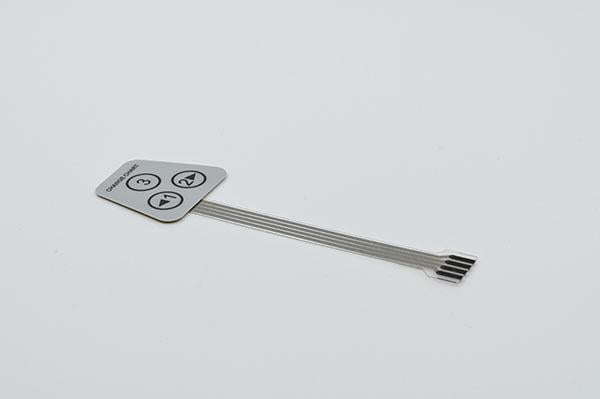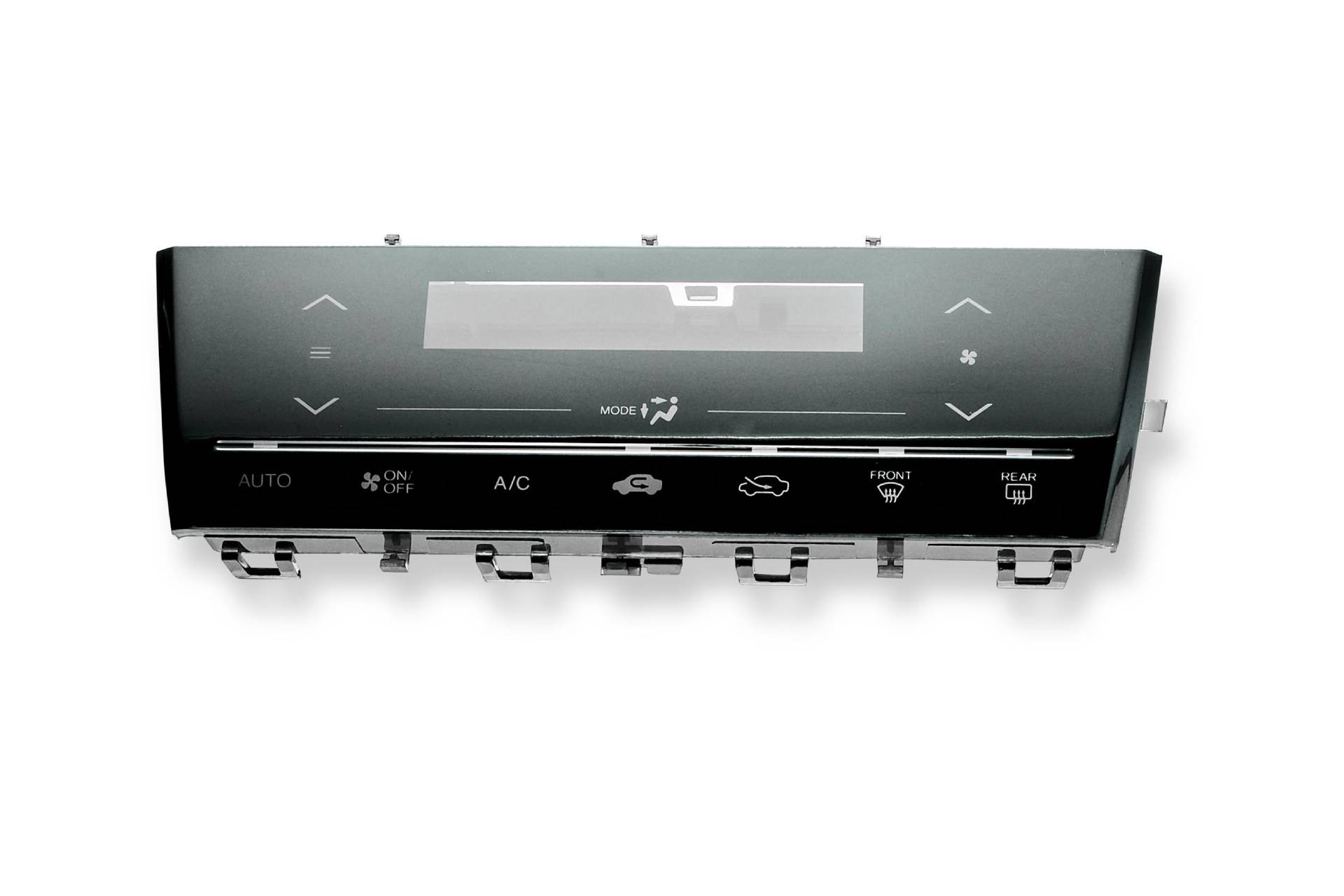Projects requiring high standards should always involve a capable membrane switch manufacturer from the start.
Projects requiring high standards should always involve a capable membrane switch manufacturer from the start.
Blog Article
All Concerning Membrane Layer Change: Comprehending Its Design and Performance
When you consider the control interfaces in modern-day tools, membrane layer buttons usually enter your mind. These parts are greater than just switches; they blend style and capability perfectly. Understanding how they work and what makes them efficient can change your point of view on daily electronic devices. There are subtleties to their design and efficiency that you could not be conscious of. Let's explore what collections membrane changes besides other control systems.
What Are Membrane Buttons?

Their smooth nature makes them very easy to tidy and immune to dust and wetness, an essential function in lots of settings. Membrane layer switches can also be customized concerning shape, dimension, and graphics, allowing makers to develop distinct interfaces tailored to specific items. And also, they're lightweight and thin, which helps in lessening the overall bulk of tools. On the whole, membrane buttons play a substantial function in improving individual experience across a broad selection of applications.
How Membrane Switches Job
When you press a trick on a membrane layer switch, it activates an uncomplicated yet efficient device. The top layer, typically made of adaptable material, presses down onto a conductive layer beneath it. This activity bridges the space between conductive traces, completing an electric circuit. As quickly as the circuit closes, it sends out a signal to the tool's controller, which analyzes your input.
You'll discover that the responsive responses varies based on the button design, using either a soft click or an extra pronounced response. As soon as you release the key, the membrane layer returns to its original placement, reopening the circuit and stopping the signal. This procedure happens nearly instantaneously, making certain a responsive customer experience.
Membrane layer buttons are popular due to their resilience and resistance to dust and dampness, making them perfect for different applications, from family home appliances to medical gadgets. Recognizing this procedure assists you value their widespread use.
Key Parts of Membrane Layer Switches
Understanding the crucial components of membrane layer switches is fundamental for comprehending their capability and style. The safety layer guards versus ecological aspects and wear, prolonging the button's life-span. By comprehending these components, you'll get insight into just how membrane changes operate and their value in numerous applications.
Products Used in Membrane Layer Switch Style
The efficiency and durability of membrane layer switches heavily depend on the materials used in their layout. You normally encounter polyester and polycarbonate as key substratums due to their excellent strength and versatility. These materials resist scrapes and chemicals, making them excellent for requiring environments.
The conductive layers typically make use of silver or carbon, chosen for their dependability and conductivity. membrane switch manufacturer. Silver supplies premium performance, while carbon is an affordable alternative. For the overlay, you may take into consideration a matte or glossy surface, relying on your aesthetic needs and individual experience
Adhesives play a vital function also; they bond layers safely and ensure long life. Make certain to choose adhesives that hold up against environmental aspects like temperature and humidity. Lastly, do not forget the importance of a great printing technique for graphics, as it enhances both functionality and visual allure. Picking the right products will certainly ensure your membrane switch stands the test of time.
Style Considerations for Membrane Switches
While developing membrane layer switches, it's vital to think about numerous aspects that influence their functionality and user experience. Begin by concentrating on the layout and switch dimension; make sure they're instinctive and simple to navigate. Think about the responsive comments you wish to offer-- will users need an obvious click or a softer touch? Furthermore, think of the materials you'll use, as they'll impact resilience and looks.
Do not overlook the graphic style; clear labeling and shade contrast are substantial for visibility. Verify your design suits environmental elements, like dampness or temperature variations, which can affect performance. Ultimately, remember the significance of screening prototypes with genuine individuals to gather comments and make required modifications. This iterative process assists you refine the design, confirming it fulfills both useful and aesthetic needs efficiently. By carefully taking into consideration these aspects, you'll produce a membrane switch that improves functionality and complete satisfaction.
Applications of Membrane Switches
Membrane layer buttons are flexible elements located in numerous applications, from commercial devices to consumer electronic devices. You'll see their effect in devices that call for durable user interfaces and in devices that benefit from sleek styles. Comprehending these applications helps you value the performance and functionality of membrane layer buttons in everyday modern technology.
Industrial Devices Use
When you're looking to boost the functionality of industrial devices, membrane buttons supply a trustworthy solution that combines longevity with user-friendly layout. These switches are best for rough environments, providing resistance to dirt, dampness, and chemicals. Embrace membrane buttons to streamline your procedures and improve overall performance.
Consumer Electronics Integration
In the domain of consumer electronics, membrane layer switches play a crucial role in boosting individual communication and gadget performance. Membrane switches additionally ensure sturdiness and resistance to dust and dampness, expanding the life-span of your electronics. By picking membrane buttons, you boost not just the functionality but likewise the design of your gadgets, making everyday interactions smooth and enjoyable.
Benefits and Disadvantages of Membrane Buttons
While membrane switches supply a series of advantages, they Full Report additionally feature some downsides that you ought to think about. One considerable benefit is their small layout, making them perfect for space-constrained applications. They're additionally cost-efficient, providing a long lasting service with a reduced production cost. Furthermore, their seamless surface area is simple to tidy, improving hygiene in environments like healthcare facilities.

Membrane switches can have a shorter life-span contrasted to mechanical buttons, particularly under heavy use. They can also be much less tactile, which could impact individual comments during operation. Stabilizing these pros and cons will certainly assist you figure out if membrane buttons are the appropriate fit for your task.
Regularly Asked Questions
Just How Lengthy Do Membrane Switches Typically Last?
Membrane layer switches generally last between 5 to one decade, depending on usage and environmental problems. You'll desire to review variables like wear, exposure to wetness, and temperature level variations to evaluate their durability successfully.
Can Membrane Layer Changes Be Personalized for Particular Designs?
Yes, you can customize membrane buttons to fit details designs (membrane switch manufacturer). You'll have the freedom to select this article colors, forms, and formats that match your project's requirements, guaranteeing they blend perfectly with your general aesthetic
What Is the Cost Array for Membrane Switch Production?
The expense variety for membrane layer switch manufacturing generally drops between $1 and $10 per device, relying on elements like design complexity, amount, and products. You can obtain quotes from manufacturers to find the very best option.

Are Membrane Changes Water-proof or Resistant?
Membrane buttons can be created to be water-proof or immune, depending on materials used and building approaches. If you need them for damp settings, ensure you specify those demands during the layout procedure.
How Do Membrane Changes Compare to Conventional Buttons?
Membrane buttons are typically thinner and more flexible than conventional buttons, offering a sleek design. They're commonly simpler to cleanse and incorporate, article yet may not offer the responsive comments you're utilized to with mechanical choices.
Final thought

Report this page